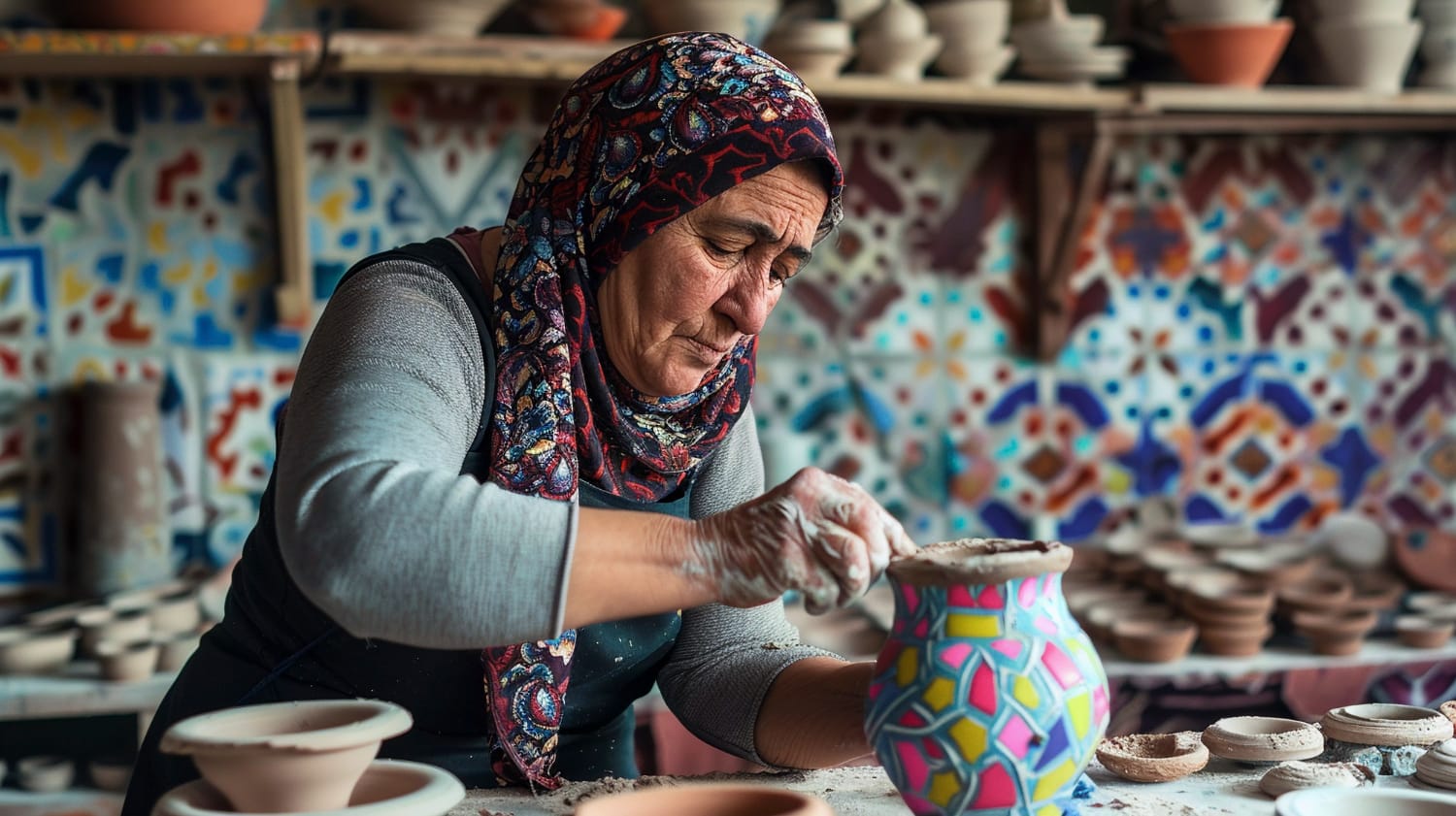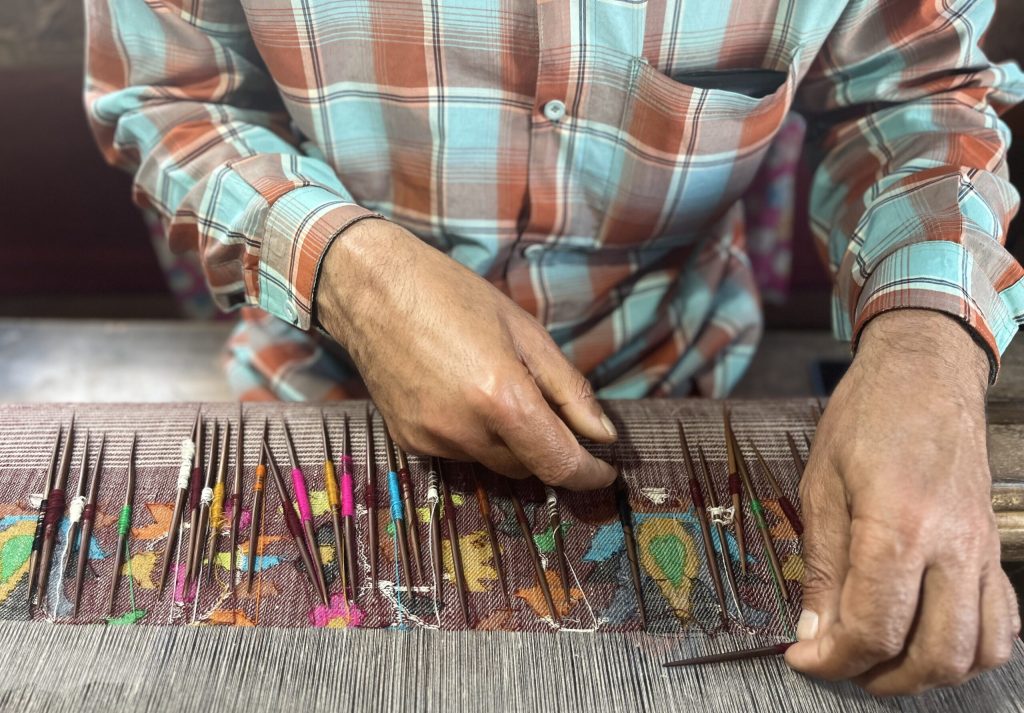The influence of social media on the revival of artisanal craft

Reviving Tradition in the Digital Age
In a world dominated by mass production, the artisanal craft scene is experiencing a remarkable resurgence, and social media plays a pivotal role in this revival. Platforms like Instagram, Pinterest, and TikTok have transformed the way artisans showcase their skills and connect with audiences. As a result, traditional craft methods are gaining renewed appreciation and visibility.
Social media influences the revival of artisanal craft through several key features:
- Visual Appeal: Stunning images and videos capture the beauty of handcrafted items. For instance, a skilled potter can demonstrate their craftsmanship by sharing time-lapse videos of wheel-throwing or glazing techniques, thus enticing viewers with the allure of their finished products. High-quality photographs of intricate details, colors, and textures have the power to attract attention and establish a solid follower base.
- Direct Engagement: Artisans can interact with potential customers, fostering relationships. Through comments, live Q&A sessions, or even personalized messages, artisans are building a community around their brands. This direct connection allows consumers to learn about the stories behind the products, including the materials used and the inspiration driving the creations. For example, a leather craftsman may share anecdotes about sourcing ethically produced hides, creating a narrative that resonates deeply with eco-conscious buyers.
- Global Reach: Crafters can share their work beyond local borders and connect with a wider audience. A small knitting business in a rural town can now engage with customers from urban centers across the country, or even internationally. This expansive reach fosters a new type of market that values uniqueness over uniformity. As such, artisans are able to sustain and grow their businesses, even while operating on a small scale.
This digital connectivity has led to exciting trends, such as the rise of DIY craft groups and virtual marketplaces. For instance, platforms like Etsy have become breeding grounds for homegrown talent, giving artisans a platform to sell their goods while maintaining control over their branding and pricing. Emphasizing sustainable practices and unique storytelling allows these artisan brands to tap into a consumer base that increasingly seeks authenticity in a world full of generic products.
Artisans have learned to leverage social media for creative expression, showcasing not only the end product but also the process itself. Artisans, such as candle-makers or jewelry designers, use behind-the-scenes videos or tutorials to invite their followers into the realm of creativity, providing insight into their artistic journey.
Intrigued by how these platforms facilitate artistic expression and foster community? Join us as we delve deeper into the fascinating world of artisanal craft and its social media landscape, exploring success stories, challenges, and future possibilities. From the revival of ancient techniques to the embrace of contemporary aesthetics, the intersection of traditional craft and social media is a dynamic space full of potential where artistry and innovation collide.

DIVE DEEPER: Click here to discover the art of molecular gastronomy
A New Age of Creativity and Connection
As social media platforms evolve into bustling marketplaces of ideas and products, artisanal crafts have found an unexpected ally in the digital realm. Each scroll through Instagram or TikTok unveils a treasure trove of creativity, showcasing artisans dedicated to preserving traditional methods while innovatively adapting to modern tastes. With just a few taps, these skilled crafters can share their creations with an expansive audience, igniting a resurgence of interest in handmade goods. This fusion of art and technology fosters an environment ripe for discovery and exploration.
One of the most significant aspects of social media’s influence on artisanal craft is its ability to create a compelling narrative around craftsmanship. Artisans are no longer just selling products; they are sharing the stories behind their creations. This storytelling adds a layer of meaning that appeals to consumers increasingly drawn to brands with authenticity and purpose. According to a 2022 study by the Artisan Economy Initiative, nearly 70% of consumers expressed a preference for purchasing from makers who provide insight into their crafting process. This trend indicates a growing desire for connection between crafters and customers, nurtured through social media networks.
- Educational Content: Beyond showcasing their crafts, artisans leverage platforms to educate audiences. For example, pottery enthusiasts often create tutorials on glazing techniques, promoting not only their products but the craft itself. This education fosters enthusiasm among followers, some of whom may even decide to take up the craft themselves.
- Collaboration: Social media facilitates collaboration among artisans and influencers, allowing them to create cross-promotional content. By partnering with lifestyle influencers, for instance, artisans can reach diverse audiences and tap into new markets. This cross-pollination of ideas and communities can lead to unique product innovations.
- Real-time Feedback: Artisans receive immediate feedback on their work, which can refine their craft and influence future designs. By engaging in direct conversations through comment sections or polls, craftsmen can understand their audience’s preferences better, enabling them to cater to consumer desires while retaining their unique artistic flair.
The democratization of art through social media also empowers aspiring artisans. Many talented makers initially hesitant to share their work are encouraged by the supportive environment online. Craft fairs and local marketplaces, once the mainstays of artisanal exposure, have transformed into vibrant digital platforms where every creator has a voice. With low overhead costs and a global audience at their fingertips, emerging artisans can launch businesses often without significant financial risk.
This blending of community support and digital presence not only boosts individual artisans but also contributes to the overall revival of traditional crafting techniques. As audiences become more aware of unique, handcrafted goods, they are supporting not just individual creators, but a cultural renaissance that values artistry, tradition, and sustainability in a fast-paced, mass-produced world.
With each post, story, or shared video, the revival of artisanal craft emerges as a powerful testament to the resilience of tradition in the face of modernization, revealing a rich tapestry of creativity woven into the digital age. Join us as we explore further the stories of artisans thriving in this new landscape and delve into the implications of social media for the future of handcrafted goods.
The Impact of Social Media on Artisanal Visibility
Social media platforms have substantially transformed the landscape for artisans, allowing them to showcase their craftsmanship to a global audience. Each post, image, and video shared creates instant connections with potential customers, enabling a level of visibility that was previously unattainable. For instance, artisans can utilize platforms like Instagram or Pinterest to display their creations, demonstrating not only the final product but also the intricate processes behind them. This transparency engages followers with exciting behind-the-scenes content and highlights the artistry involved.
Community Building and Support
The role of social media extends beyond individual marketing; it fosters a community of creators and consumers who share similar passions. Many artisans are finding kinship within niche groups dedicated to their crafts. This sense of belonging and support can lead to collaborations, mentorships, and knowledge sharing, significantly enhancing the revival of traditional crafts. Hashtags related to specific artisanal practices are creating movements that inspire new artisans to learn and engage with time-honored techniques, effectively revitalizing these skills.
The Economic Benefits of Online Presence
The digital marketplace opens lucrative avenues for traditional artisans. By cutting out the middlemen, artisans can sell directly to consumers, significantly increasing their profit margins. Online shops, bolstered by social media promotions, allow these creators to reach clientele worldwide, creating an expanded and sustainable customer base. The economic benefits are profound as artisans receive not only sales revenue but also invaluable feedback from their audience, enabling them to refine their craft continually.
Environmental and Ethical Considerations
Moreover, social media serves as a platform for promoting the sustainability of artisanal crafts. Awareness around ethical consumption and locally sourced materials is gaining traction, with consumers increasingly favoring handmade products over mass-produced items. This shift is partly driven by the visibility artisans gain from sharing stories about their materials and methods, which helps consumers make informed purchasing decisions that align with their values.
| Category | Details |
|---|---|
| Visibility | Artisans can showcase their work internationally, reaching vast audiences. |
| Community Support | Social media builds connections among artisans and consumers, fostering collaboration. |
| Economic Opportunities | Direct sales increase artisans’ profit margins and sustain their craft. |
| Sustainability | Consumers increasingly value ethically sourced handmade products promoted online. |
In essence, the influence of social media has sparked a revival of artisanal craft through enhanced visibility, community support, economic empowerment, and a focus on sustainability. As artisans continue to embrace these platforms, the future of handcrafted goods looks exceptionally promising, paving the way for a rich intersection between tradition and modernity.
DISCOVER MORE: Click here to delve into the world of landscape photography
The Marketplace of Ideas and Artistry
In the age of connectivity, the digital marketplace has emerged as a crucial lifeline for artisans, providing them with not only a platform to showcase their work but also a dynamic space to engage and build a community. This environment has enabled artisans to launch successful online shops through platforms like Etsy or Shopify, which integrate seamlessly with social media channels. With over 4.5 billion people active on social media worldwide, entrepreneurs can tap into an expansive audience, allowing for artisanal crafts to flourish beyond local limitations.
Moreover, social media is strengthening the relationship between consumer preferences and product offerings. Platforms like Facebook and Instagram now serve as essential market research tools, where artisans can analyze trends based on real-time interactions. Utilizing features like analytics tools, artisans understand which products resonate with their audience, leading to informed decisions about what to produce next. This data-driven approach enhances the adaptiveness of artisans, enabling them to stay relevant in an ever-changing marketplace.
Perhaps one of the vital aspects of this artisanal revival is the rise of niche communities. Social media groups and pages dedicated to specific crafts—be it woodworking, pottery, or textile arts—create a sense of belonging among artisans and enthusiasts alike. These communities provide a space for sharing experiences, challenges, and successes, fostering mentorship opportunities that help novice crafters refine their skills. According to research from the Craft Industry Alliance, 62% of artisans reported that they have benefited from peer support through social media, indicating that these platforms serve as more than just marketing tools; they are lifelines for learning and collaboration.
In addition, the growing consumer movement towards sustainability plays a pivotal role in driving the artisanal craft revival. Social media is a catalyst in the promotion of eco-conscious practices, enabling artisans to highlight their sustainable sourcing and production methods. As noted in a survey conducted by Green America, approximately 73% of consumers are willing to pay more for eco-friendly products, making it imperative for artisans to showcase their commitment to sustainability on digital platforms. Artisans are therefore not just selling crafts; they are marketing their values alongside their products, creating a powerful narrative that attracts ethically-minded consumers.
Furthermore, the global health crisis brought about by the COVID-19 pandemic has accelerated the shift towards digital transactions and online engagement. Many artisans who once relied on physical markets pivoted to build robust online presences, leading to increased visibility and sales opportunities. A survey from the Handmade Business Institute revealed that artisans who adapted to the online market during the pandemic saw sales increase by an impressive 120%. This adaptability emphasized the importance of a multifaceted online strategy, encompassing interactive content such as virtual workshops, live demonstrations, and direct sales through social media platforms.
Social media continues to redefine the landscape of artisanal crafts by making it not only possible but advantageous for artisans to reclaim their narratives, build brands, and connect meaningfully with their customers. As artisans navigate through this evolving digital ecosystem, they are not just reviving traditional crafts, but actively reshaping the dialogues surrounding handmade artistry in the 21st century. The world has now become their canvas, and the dynamic interplay of creativity and commerce fuels the resurgence of artisanal craftsmanship across the globe.
DISCOVER MORE: Click here to dive deeper
Embracing the Digital Renaissance of Artisanal Craft
As we delve into the intricate relationship between social media and the revival of artisanal craft, it becomes evident that these digital platforms have woven themselves into the fabric of creative entrepreneurship. Artisans today leverage social media not just for visibility, but as a powerful tool for community building, trend analysis, and sustainable practices that resonate deeply with modern consumers. The unparalleled ability to connect with a global audience has transformed the way artisans approach their craft, allowing them to navigate shifts in consumer preferences and economic landscapes.
The rise of niche communities has further fostered a culture of mentorship and shared knowledge that empowers creators to refine their skills and expand their horizons. This phenomenon has not only democratized artistry, but has also reinvigorated traditional crafts, infusing them with contemporary relevance. As eco-consciousness gains momentum, artisans are uniquely positioned to market their sustainability narratives alongside their products, appealing to the growing base of ethically-minded consumers.
Ultimately, the digital age has catalyzed a resurgence of artisanal craftsmanship that blends time-honored techniques with modern innovation. As we observe this evolution, it’s clear that social media is more than a marketing tool; it is a crucial lifeline enabling artisans to reclaim their narratives, foster connections, and thrive amidst changing economic realities. The revival of artisanal craft, powered by the symbiotic relationship with social media, invites us to reconsider the value of handmade artistry in our increasingly digital world, prompting a collective appreciation for craftsmanship that is as meaningful as it is beautiful.


